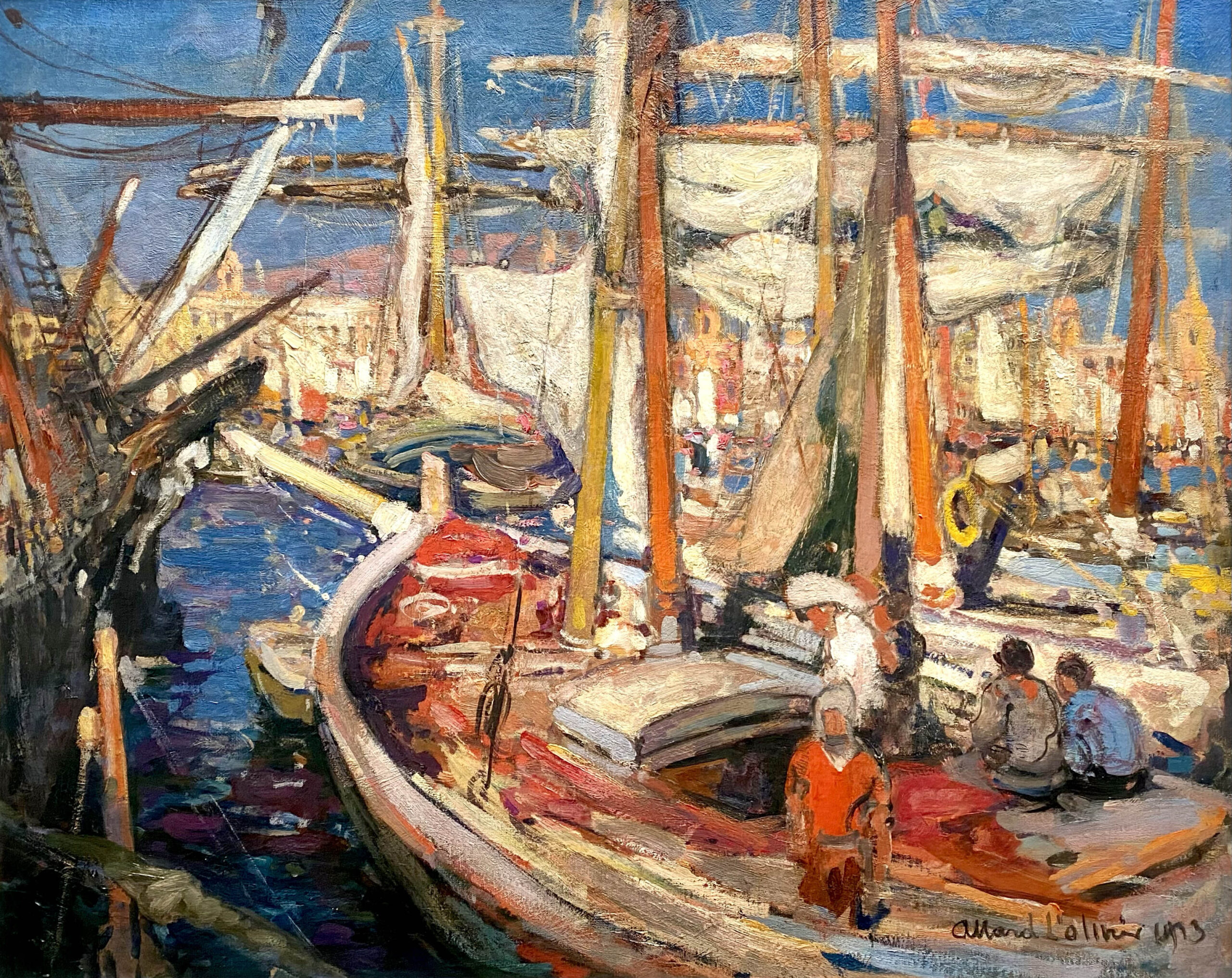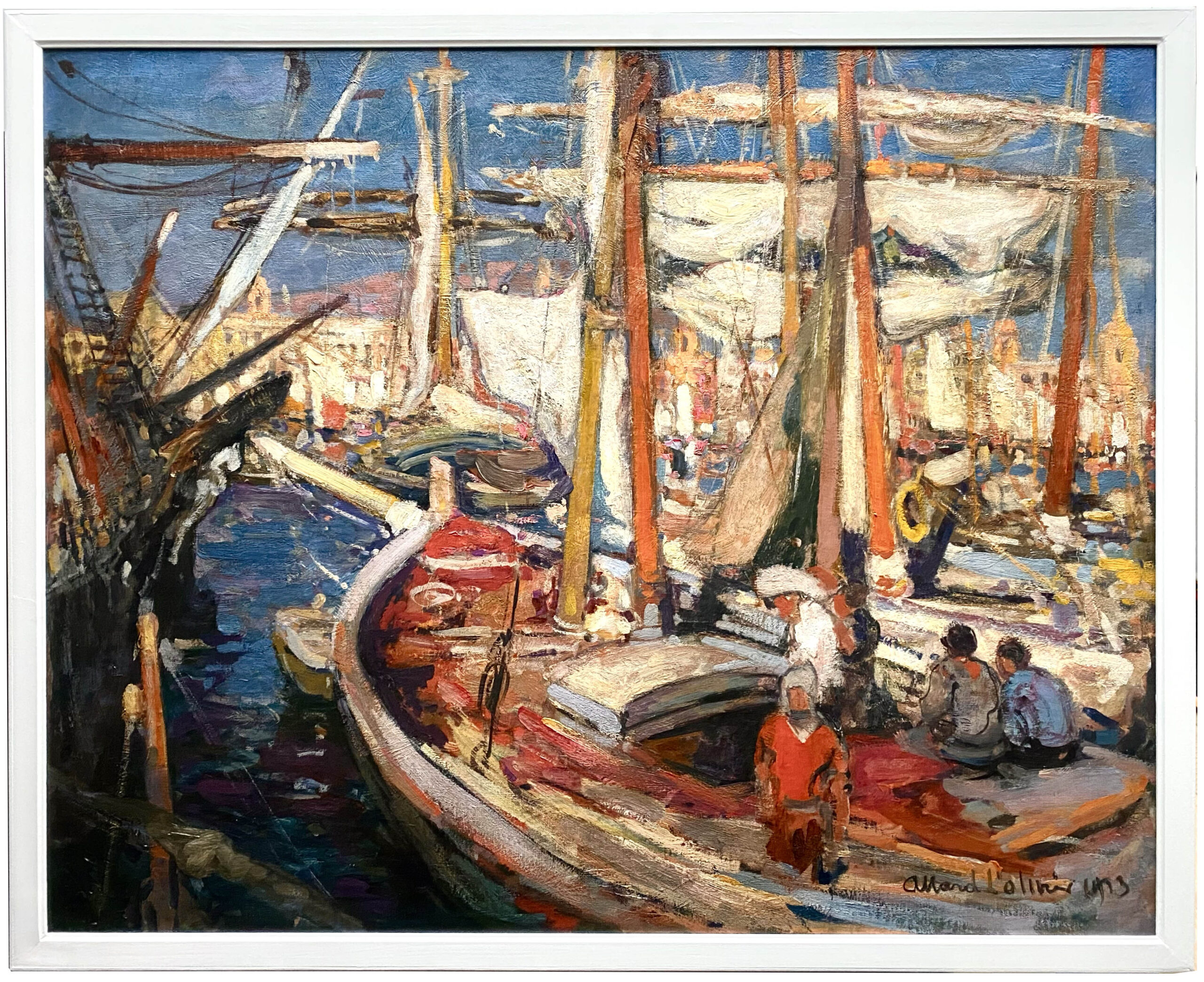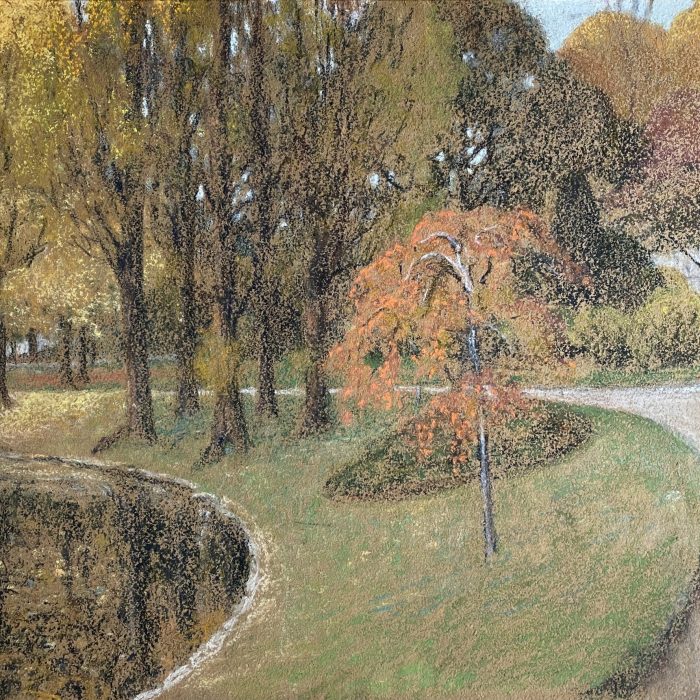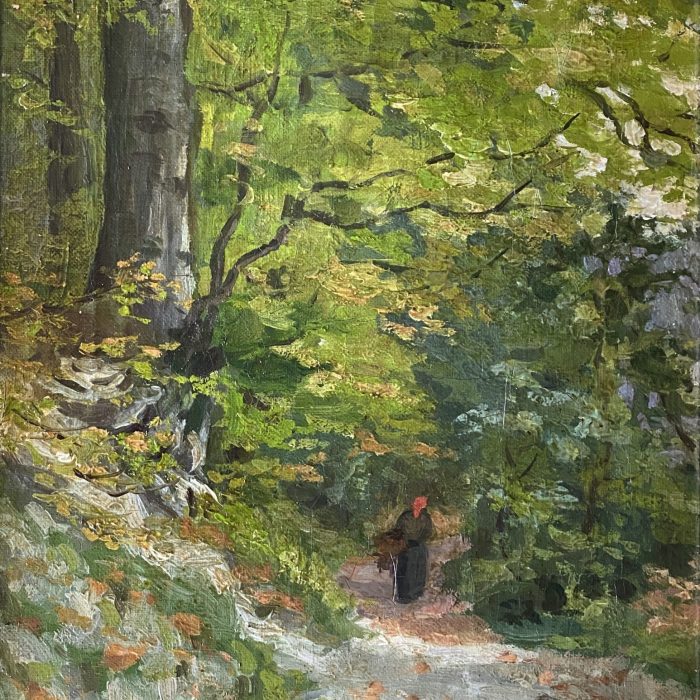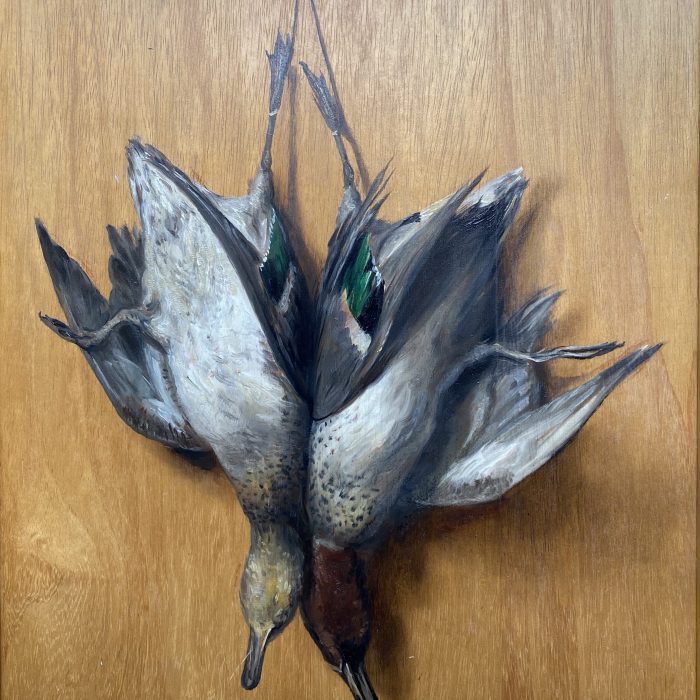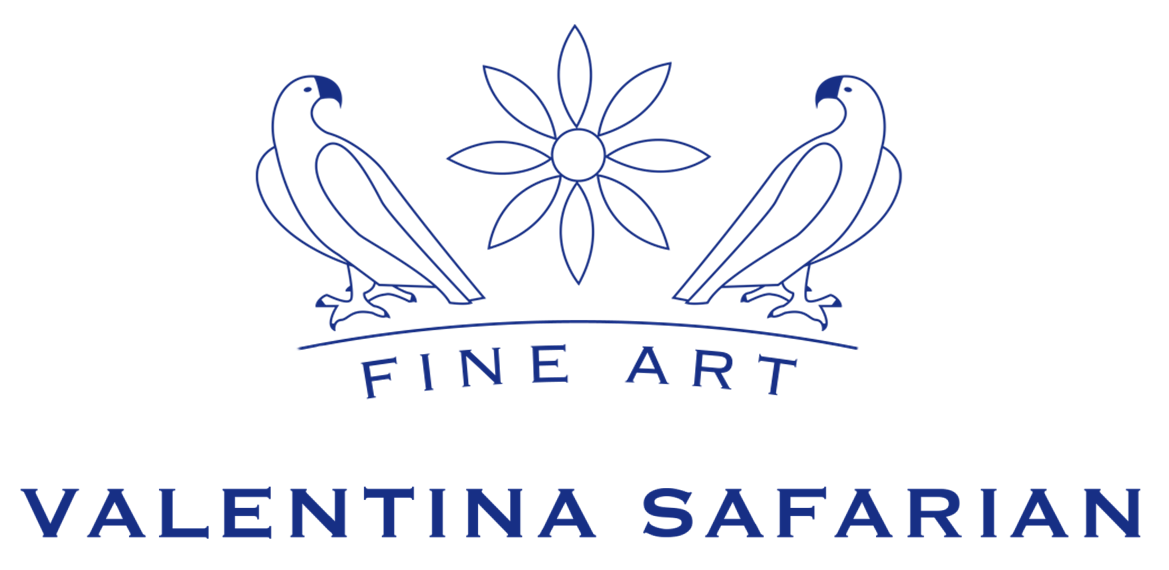Tournai 1883 – 1933 Yanongé, near Kisangani
Belgian Painter
Harbour Scene – Port of Palermo
Fernand Allard l’Olivier was a Belgian painter and illustrator, celebrated for his evocative works in the Africanist style. Born in Tournai in 1883, he was the son of the artist Charles Allard, who ran a lithography studio and taught watercolour at the Académie des Beaux-Arts de Tournai. At fourteen, Fernand began an apprenticeship at the Imprimerie Van Campenhout in Molenbeek, where he learned the craft of lithography before pursuing painting as his true calling.
In 1901, he moved to Paris and studied at the Académie Julian under William Bouguereau and Jean-Paul Laurens. It was, however, the realist painter Jules Adler who had the most profound influence on him, encouraging Allard to depict the lives of ordinary people rather than academic or historical subjects. He soon adopted the pseudonym L’Olivier, taken from his maternal grandmother, the novelist Pauline L’Olivier, and became known for his elegant nudes and portraits.
In 1912, he married Juliette Rossignol, daughter of a Parisian bookseller. Their son André Allard l’Olivier, born the following year, would later become a celebrated poet. During this period, Fernand also worked as an art critic, while continuing to paint with a luminous palette influenced by Impressionism and Realism.
During the First World War, Allard l’Olivier joined the Section artistique de l’armée belge en campagne, the artistic division of the Belgian Army. From 1916 to 1918, he sketched and painted scenes directly from the front lines at De Panne, capturing the drama and desolation of war. His postwar publication, Alphabet de guerre (1920), became an important artistic record of the conflict.
In the 1920s, Allard l’Olivier travelled widely, producing works from Tunisia (1923) to Poland (1926). His artistic curiosity and sense of adventure culminated in a transformative journey to the Belgian Congo in 1928. Funded by the Colonial Ministry, he joined filmmaker Ernest Genval on an expedition to document African landscapes, cultures, and people. The resulting works were exhibited in Antwerp in 1929 and established him as one of Belgium’s foremost Africanist painters.
A second expedition to Central Africa in 1932–1933 took him along the Congo River and through the regions of Katanga, Lake Tanganyika, and Burundi. His letters from the journey reveal a deep fascination with the continent’s light and atmosphere, which infused his canvases with vibrant life.
Tragically, Fernand Allard l’Olivier died in 1933 in Yanongé, near Kisangani, under mysterious circumstances during his return voyage. Despite his untimely death, his artistic legacy endures through a body of work that bridges European Impressionism and African vitality.
Today, his paintings can be found in major public and private collections, including the Musée Royal de l’Armée et de l’Histoire Militaire, the Musée royal de l’Afrique centrale (Tervuren), the Musée des Beaux-Arts de Tournai, the In Flanders Fields Museum, the Musée des Beaux-Arts de Pau, the Muzeum Sztuki in Łódź, and the Musées d’art et d’histoire de Genève.

